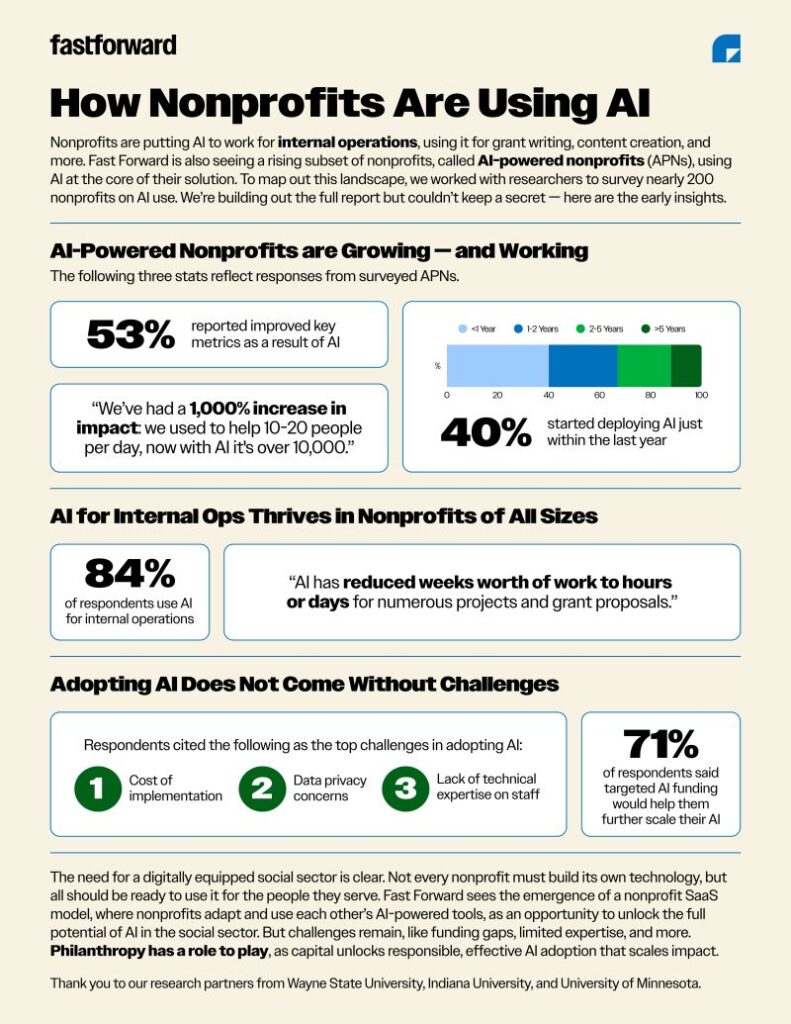Update, report now published here: The 2025 AI for Humanity Report
From Fast Forward, a a 501(c)(3) nonprofit focussed on how nonprofits can create impact using AI:
AI is moving from back-office to front-and-center for nonprofits. Fast Forward collaborated with researchers to survey 200 nonprofits, and early data shows promise: 53% of AI-powered nonprofit respondents have seen improvements in key metrics, like impact, engagement, and efficiency. Plus, 84% of all respondents are already using AI for internal operations.
The big takeaway? AI is here and helping. But to make the most of it, nonprofits need more support: funding, expertise, and a community that shares what works.
We’re digging deeper in our upcoming report, but we couldn’t wait to share these insights. Stay tuned for the full report this fall.

Nonprofits are putting Al to work for internal operations, using it for grant writing, content creation, and more.
Fast Forward is seeing a rising subset of nonprofits, called Al-powered nonprofits (APNs), using Al at the core of their solution.
The following three stats reflect responses from surveyed Al-powered nonprofits:
- 53% reported improved key metrics as a result of Al
- 40% started deploying Al just within the last year
- 84% of respondents use Al for internal operations
Respondents cited the following as the top challenges in adopting Al:
- Cost of implementation
- Data privacy concerns
- Lack of technical expertise on staff
71% of respondents said targeted Al funding would help them further scale their Al
The need for a digitally equipped social sector is clear. Not every nonprofit must build its own technology, but all should be ready to use it for the people they serve.
Fast Forward sees the emergence of a nonprofit SaaS model, where nonprofits adapt and use each other’s Al-powered tools, as an opportunity to unlock the full potential of Al in the social sector.
But challenges remain, like funding gaps, limited expertise, and more.
Philanthropy has a role to play, as capital unlocks responsible, effective Al adoption that scales impact.

